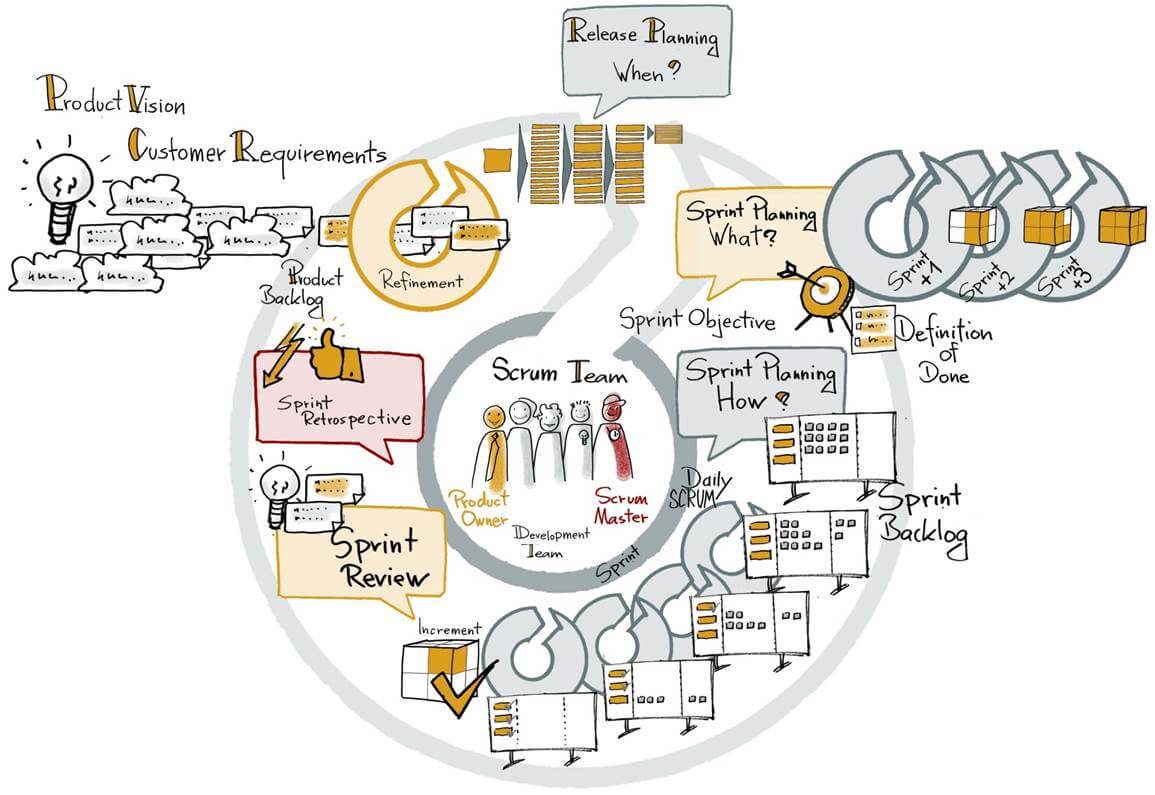SCRUM
Customer and market requirements are changing faster and faster. Product complexity is increasing steadily. Change is becoming the norm. Scrum is an agile method that helps you master this situation and minimize change costs. We help you apply and optimize Scrum in pilot projects as well as complete roll-out scenarios.
Scrum: closer to the customer, more flexible, faster
Market and customer requirements increase at an ever faster pace. Products need to offer more and more functions and become more complex. Unexpected difficulties occur despite careful pre-development and risk management. Is it still possible to keep functional and technical specifications stable across the product development cycle? The answer is no – change has become the norm. Therefore, the focus has shifted: On reducing change cost rather than avoiding changes in the first place.
This is where the agile method Scrum helps you. After its success in software development, it can now finally and successfully be used in hardware development. In Scrum, a product is developed in incremental development cycles of the same duration ("sprints"). At the end of each sprint, the team delivers a potentially shippable product increment on which the customer and/or internal stakfholders can give feedback in a "sprint review". This feedback influences the following sprints.
Scrum is well suited for the management of tasks within self-organizing project teams of 5 to 11 members. These project teams can be cross-functional, for instance including project buyers or industrial engineers. Scrum in its simplest form uses three defined roles: product owner, Scrum master and development team. It does not involve the role of the conventional project manager.
Scrum involves the customer in product development on a regular basis after every sprint. The team frequently reviews its objectives and development progress with the external or internal customer. This results in relevant product features, reducing development times. In short: products are developed for and with the customer.
Another Scrum principle is maximum transparency. The method relies on frequent information exchanges, simple visualizations and the right attitude of everyone involved. This – in combination with clearly defined roles, a high level of commitment by self-organization and a strictly structured review organization – drives the success of this agile development method.
How Scrum helps you master the pace of change.
- Scrum integrates the customer more effectively into product development using regular feedback and customer-value-oriented task prioritization. The result: higher product quality and less over-engineering.
- High-risk tasks are tackled earlier.
- Scrum teams work in sprints, untinterrupted from the outside.
- Transparency, simple visualizations, clear responsibilities and structured reviews ensure efficiency, and uninterrupted work ensures efficiency.
- The team’s result focus generates more commitment.
- Ownership, trust and direct customer feedback increase the motivation of your project teams.

